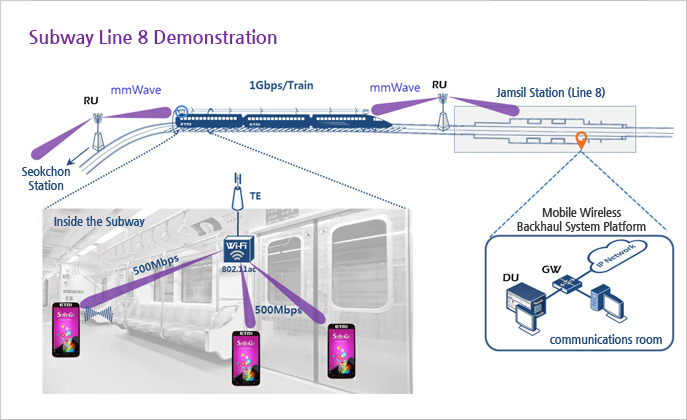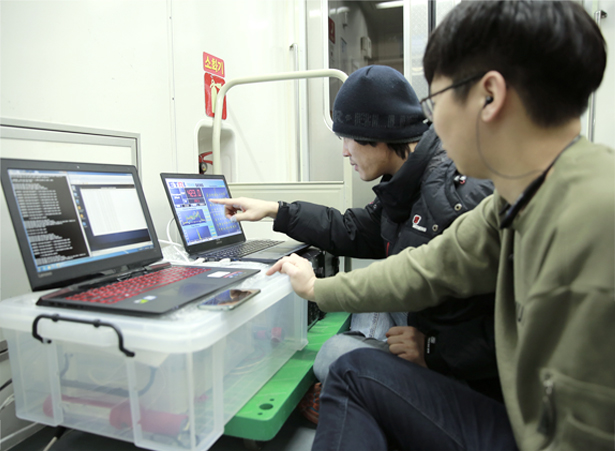
ETRI demonstrates ultrafast MHN technology
Many users often experience internet-connection failure or extremely slow in smartphones on subways and the KTX, Korea’s high-speed train. This is because of the capacity of WiBro-based mobile wireless backhaul that features the maximum speed of 10Mbps. In theory, this speed should allow smooth video download, but when a number of passengers use the Internet at the same time, the capacity is no longer sufficient to serve them all. After four years of endeavor to address the issue, ETRI has finally found a way to use High-speed Internet Service on moving subways or KTX trains via WiFi. It is the World’s First to develop the millimeter wave-based MHN(Mobile Hot-spot Network) technology, which provides 100 times faster data transmission speed than the existing WiBro-based mobile wireless backhaul. On January 28, 2016, it also demonstrated the technology on the subway train running through a part of Seoul metro’s Line 8 route. For the demonstration, ETRI established a control station in the machine room of Jamsil subway station, five sets of wireless frequency equipment within the subway tunnel, and vehicle devices within the subway train.

Simultaneous video watching available for 30 passengers in one train car

Service expansion to KTX and speed enhancement to 10Gbps
The technology was developed by ETRI as a part of the Ministry of Science, ICT and Future Planning’s MHN mobile wireless backhaul technology development project, one of the 5G integration programs. The researchers have applied for more than 30 patents and published 10 papers in SCI-level journals related to the latest technology and original technologies developed in previous projects. Following the demonstration, the research team is continuing tests to optimize the system and plans to provide technical support continuously until related companies can successfully establish commercialized systems. In addition, the researchers are working to enhance the Internet speed from 1Gbps to 10Gbps within the next two years, thereby making the commercialized systems sustainable. They will also endeavor to develop a technology to expand the service scope so that high-speed mobile Internet Service via WiFi can be provided not only on subways but also on the KTX, buses, cars, and ships. The potential global market for MHN technology is expected to grow to USD 88.6 billion for five years from 2017, and Korea will be able to dominate the global market in advance when the MHN technology is commercialized during the second half of 2016. “In the short term, we are planning to work with private companies to launch the pilot service on subways during the next year,” said Dr. Tae-jung Kim, Managing Director of the Giga Communication Research Department. “If we can provide the test service to tourists on the high-speed train from Incheon to Pyeongchang during the 2018 Pyeongchang Winter Olympics, we will have a good opportunity to publicize Korea’s advanced ICT to the world and help SMEs in the industry enter into overseas markets.”